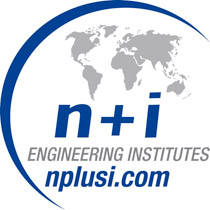
Master n+ INSA Toulouse Electronics, Control
- Bachelor
- Master
- PostMaster
Official title: Master Degree in automatic control and electronics

INSA Toulouse
Training duration
2 years
Average academic cost found without insurance
6 997€
Accréditation:
Accreditation Provider: CTI
Prerequisite of the training
Bachelor (or equivalent)
Formation type
- Initial education
Domains
- Engineering, Embedded systems, Electronics, Control
M1 section is taught by
- INSA Toulouse
M2 section is taught by
- NSA Toulouse
Training description
The Automatic control-Electronics engineering course focuses on the concepts, methods and techniques of automatic control and also develops the competences required to design the implementation of methods and techniques for real-time control and electronic circuit design. Two major topics are developed: automatic control systems, electronic and micro-electronic systems with their associated IT techniques. An important aspect of the specificity of A-E engineers and of the course itself is the demonstration of how the integration of the three disciplines, Automatic control, Electronics and Computer science makes it possible to meet the needs and demands of industry in the context of complex systems.
It provides
Cross-disciplinary competences: capacity to manage the economic, financial, human, organisational and technical aspects of a project in the sphere of activity of a generalist engineer for the:
Design and Management of automatic systems: including the systems theory and the techniques of electronics: logic and analog circuits, electronics of power, optoelectronics, micro-electronics. Moreover, sound training in the basic computer techniques stressing Real-Time for control reinforces the ability to design and implement automatic systems.
Development of integrated automatic systems: today, whatever the sphere of activity, a large number of tasks require, in what is called a "systems approach", the integration of varied concepts and techniques. The piloting of simple or complex industrial systems passes in general by the knowledge of the process, the design of efficient control rules, the command of electronic tools and digital calculators, making it possible to manage and enable communication between the various components of the system. This requires a generalist engineering course at the crossroads of the three disciplines: automatic control, electronics and computer science.
In addition to the general competences of computer engineers able to work in all sectors of activity, the course leads to two different engineering profiles, depending on the specialization chosen in the final year:
Electronic Systems: Capacity to design, produce and implement electronic or micro-electronic devices (cards, chips,?) using the concepts of integration (embedded electronic systems, communicating sensors or micro-systems)
Real Time and Systems: Capacity to design, produce and implement estimation systems, monitoring, diagnosis, real-time advanced control taking into account critical time constraints and safety as for all embedded systems.
The Automatic control-Electronics engineering course focuses on the concepts, methods and techniques of automatic control and also develops the competences required to design the implementation of methods and techniques for real-time control and electronic circuit design. Two major topics are developed: automatic control systems, electronic and micro-electronic systems with their associated IT techniques. An important aspect of the specificity of A-E engineers and of the course itself is the demonstration of how the integration of the three disciplines, Automatic control, Electronics and Computer science makes it possible to meet the needs and demands of industry in the context of complex systems.
It provides
Cross-disciplinary competences: capacity to manage the economic, financial, human, organisational and technical aspects of a project in the sphere of activity of a generalist engineer for the:
Design and Management of automatic systems: including the systems theory and the techniques of electronics: logic and analog circuits, electronics of power, optoelectronics, micro-electronics. Moreover, sound training in the basic computer techniques stressing Real-Time for control reinforces the ability to design and implement automatic systems.
Development of integrated automatic systems: today, whatever the sphere of activity, a large number of tasks require, in what is called a "systems approach", the integration of varied concepts and techniques. The piloting of simple or complex industrial systems passes in general by the knowledge of the process, the design of efficient control rules, the command of electronic tools and digital calculators, making it possible to manage and enable communication between the various components of the system. This requires a generalist engineering course at the crossroads of the three disciplines: automatic control, electronics and computer science.
In addition to the general competences of computer engineers able to work in all sectors of activity, the course leads to two different engineering profiles, depending on the specialization chosen in the final year:
Electronic Systems: Capacity to design, produce and implement electronic or micro-electronic devices (cards, chips,?) using the concepts of integration (embedded electronic systems, communicating sensors or micro-systems)
Real Time and Systems: Capacity to design, produce and implement estimation systems, monitoring, diagnosis, real-time advanced control taking into account critical time constraints and safety as for all embedded systems.
Scolarships (Subject to the school offer)
Year 1:
eiffel, cumex, egideYear 2:
eiffel, cumex, egideSelect an option
Major in Embedded Electronics
Language level prerequisites
The minimum language level required, namely : A2 in French and B2 in English will be verified no later than end of April, 2025 (to be confirmed in your academic offer)
Course language
Only French
Language requirement to graduate
French B2
English B2
M1 Part
Location
INSA Toulouse
135, avenue de Rangueil
31077 Toulouse cedex 4
Average academic cost found without insurance
2318€
Core
| Credits | Hours | Language | |
|---|---|---|---|
| Digital signal acquisition architectures and Computed controlled systems | 4.00 | 90.00 | French |
| Informatique matérielle | 7.00 | 88.00 | French |
| Communicating within organizationsin foreign languages Level 1 | 4.00 | 75.00 | other |
Embedded Electronics
| Credits | Hours | Language | |
|---|---|---|---|
| Device modeling and digital circuit architectures | 4.00 | 90.00 | French |
| Analog electronic system architecture | 4.00 | 55.00 | French |
| Complex system analyses | 4.00 | 88.00 | French |
Core
| Credits | Hours | Language | |
|---|---|---|---|
| Computer science | 6.00 | 88.00 | French |
| Research project | 3.00 | 115.00 | French |
| management | 4.00 | 85.00 | French |
| Systems architectinG | 4.00 | 107.00 | French |
| Requirement engineering | 3.00 | 81.00 | French |
| Discrete event systems and Optimization | 4.00 | 48.00 | French |
Embedded Electronics
| Credits | Hours | Language | |
|---|---|---|---|
| Energy management for embedded systems | 3.00 | 60.00 | French |
| Practical Work in ControL | 3.00 | 35.00 | French |
| Optimisation Systèmes discrets et continus | 5.00 | 113.00 | French |
M2 Part
Location
NSA Toulouse
135, avenue de Rangueil
31077 Toulouse cedex 4
Average academic cost found without insurance
4679€
Embedded Electronics
| Credits | Hours | Language | |
|---|---|---|---|
| Choose 1 option(s) in 2 | |||
| electronics and enbedded systems | 30.00 | 0.00 | French |
| critical embedded systems | 30.00 | 0.00 | French |
Core
| Credits | Hours | Language | |
|---|---|---|---|
| TRAINING PERIOD | 30.00 | 0.00 | English |
Major in System Engineering
Language level prerequisites
The minimum language level required, namely : A2 in French and B2 in English will be verified no later than end of April, 2025 (to be confirmed in your academic offer)
Course language
Only French
Language requirement to graduate
French B2
English B2
M1 Part
Location
INSA Toulouse
135, avenue de Rangueil
31077 Toulouse cedex 4
Average academic cost found without insurance
2318€
Core
| Credits | Hours | Language | |
|---|---|---|---|
| Digital signal acquisition architectures and Computed controlled systems | 4.00 | 90.00 | French |
| Informatique matérielle | 7.00 | 88.00 | French |
| Communicating within organizationsin foreign languages Level 1 | 4.00 | 75.00 | other |
System Engineering
| Credits | Hours | Language | |
|---|---|---|---|
| Power systems and instrumentation | 7.00 | 142.00 | French |
| Modelling of multi-physics systems | 5.00 | 100.00 | French |
Core
| Credits | Hours | Language | |
|---|---|---|---|
| Computer science | 6.00 | 88.00 | French |
| Research project | 3.00 | 115.00 | French |
| management | 4.00 | 85.00 | French |
| Systems architectinG | 4.00 | 107.00 | French |
| Requirement engineering | 3.00 | 81.00 | French |
| Discrete event systems and Optimization | 4.00 | 48.00 | French |
System Engineering
| Credits | Hours | Language | |
|---|---|---|---|
| Requirement engineering | 3.00 | 81.00 | French |
| Discrete event systems and Optimization | 4.00 | 48.00 | French |
| Systems architecting | 4.00 | 107.00 | French |
M2 Part
Location
NSA Toulouse
135, avenue de Rangueil
31077 Toulouse cedex 4
Average academic cost found without insurance
4679€
System Engineering
| Credits | Hours | Language | |
|---|---|---|---|
| Management of risks, dependability and quality | 6.00 | 0.00 | French |
| industrialisation | 5.00 | 0.00 | French |
| Advanced design | 6.00 | 0.00 | French |
| management | 3.00 | 0.00 | French |
| human resources and others | 6.00 | 0.00 | French |
| Choose 1 option(s) in 2 | |||
| design methodologies of systems on chip | 4.00 | 0.00 | French |
| heat engines and processes | 4.00 | 0.00 | French |
Core
| Credits | Hours | Language | |
|---|---|---|---|
| TRAINING PERIOD | 30.00 | 0.00 | English |
